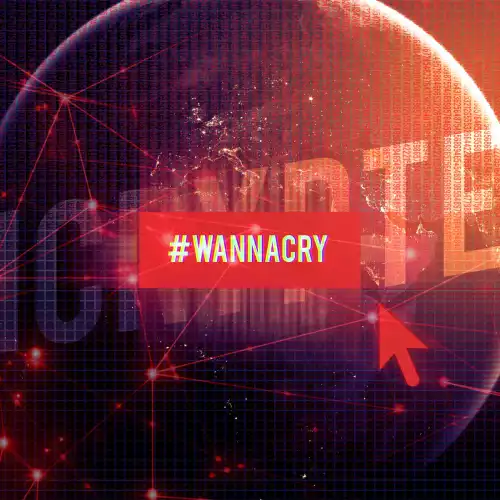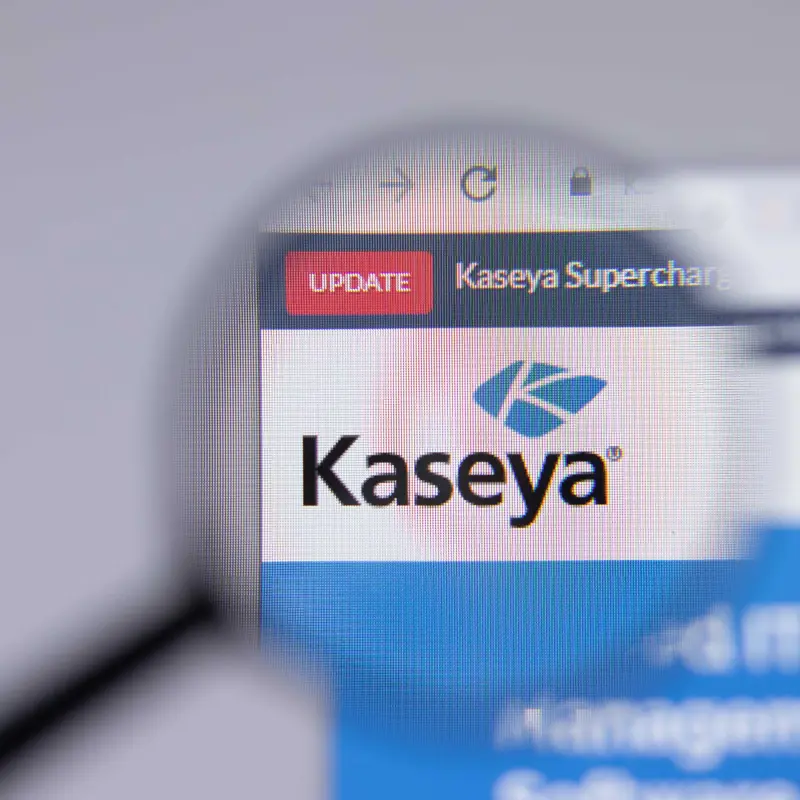Breaking Down the Real Meaning of an XDR Solution
Read More Learn how to protect your organization from the devastating impact of BlackSuit
Want to stay ahead of threats in 2025? This research report is all you need to stay updated.
Recent years have seen a considerable increase in ransomware attacks. It has had an impact on infrastructure, individuals, and enterprises of all sizes. According to a Cybersecurity Ventures estimate, attacks will occur every two seconds and cost the global economy over $265 billion by 2031. The impact is bad, from money loss to data leaks and harm to reputation.
A ransomware attack is a type of cybercrime where malicious software encrypts files/folders and locks victims out of their system. In return, they’d ask for ransom for decryption key.
Ransomware can spread through phishing emails, outdated software, or downloaded files from unreliable sources. It not only interrupts operations but also puts data at risk, especially with double extortion tactics.

In 2024, the average ransom demand rose to $1.5 million. This clearly shows attackers are becoming more daring. Companies not agreeing to pay the ransom often suffer serious repercussions like operational and reputational damage, and in some cases the cost of fixing the damage might exceed the ransom amount itself.
Ransomware attacks are deliberate activities designed to exploit vulnerabilities in networks and systems. The victim’s systems are greatly impacted as each phase of the attack builds upon the one before it. Let’s have a look at the specific steps involved:

The attack starts by getting into the target’s network or system. This part uses different methods, such as:
Once inside, ransomware needs to stay hidden and avoid detection. This includes:
Once the ransomware gets a foothold, it spreads across the entire network.
The main feature of ransomware attacks is the encryption of data. Key methods include:
Recent ransomware attacks often use a method called double extortion, which is a big change from older ways:
This method puts more pressure on victims and can cause bigger problems, possibly involving regulatory authorities if sensitive customer data is revealed.
At the end, attackers start collecting the ransom:
Let’s look at the Ryuk ransomware attack on a Florida city in 2019:
In this video, Fidelis Security experts uncover:
Knowing how these attacks happen step by step is important for creating strong defenses and responding effectively.
Ransomware comes in different types, each with unique features and methods. Knowing these types is important for creating good ways to stop and deal with them.
This ransomware is the most common and destructive one. It attacks the files and encrypts them with strong algorithms making them unusable.
How It Works: It looks for specific types of files like docs, pictures, and databases, then encrypts them with methods like RSA or AES. Once files are encrypted, a message pops up demanding ransom in return for the decryption key.
Examples: Ryuk, LockBit, and Conti
Unlike encrypting ransomware, locker ransomware instead of encrypting, completely locks users out of their systems, making the operating system or important applications inaccessible.
How It Works: Locker ransomware shows a lock screen or message that stops the user from using their system. The attackers usually ask for payment in exchange for the code to unlock the system.
Example: WinLocker
This kind of ransomware uses both encryption and stealing data. Even if people restore their systems from backups, the attackers still have power by threatening to share sensitive data.
How It Works: Attackers take sensitive files and then encrypt them.
People are forced to pay the ransom to stop attackers from sharing or selling the stolen data on the dark web.
Example: Maze Ransomware
Using this model, attackers without technical skills can also attack people. In this cybercriminal offer easy-to-use ransomware kits, and others carry out the attacks in return for a part of the money made.
How It Works: RaaS creators make and manage ransomware, selling it to others through underground markets.
Those who buy it get clear instructions, tools, and help to launch the attacks.
Examples: Sodinokibi (REvil) and DarkSide
As mobile devices become more common, ransomware has also extended to smartphones. This type of attack either locks the phone or encrypts the data on it.
How It Happens: Mobile ransomware usually spreads through malicious apps from untrusted app stores or fake links.
After being installed, it either locks the phone or encrypts the files, then asks for money to unlock or restore them.
Example: Congur
Disk-wiping ransomware doesn’t try to get money, instead, it wipes important data, usually for political or personal reasons.
How It Works: The attackers use the ransomware to delete MBR or remove key files, making the computer unusable.
Example: NotPetya
Real-world ransomware attacks show potential harm that these threats can do to enterprises. These examples demonstrate the increasing sophistication of ransomware and the pressing necessity of strong security measures.
In 2019, a big newspaper company in the U.S. was hit hard by a ransomware attack called Ryuk.
What Happened:
The attackers got in by tricking employees with phishing emails. After getting inside, Ryuk locked up the publisher’s critical systems, like those managing content, print operations, and distribution.

Impact:
The WannaCry outbreak showed how fast ransomware can spread around the world.
What Happened:
WannaCry exploited a vulnerability in Microsoft Windows (EternalBlue) that was first identified by the NSA and then made public by the hacker group Shadow Brokers.
In a matter of hours, the ransomware spread autonomously, infecting over 200,000 devices across 150 nations.

Impact:
The ransomware attack on Colonial Pipeline showed how cyberattacks can affect important parts of a country and people’s daily lives.

What Happened:
The attack was executed using DarkSide, and it targeted the systems of the biggest fuel pipeline in the U.S.
The attackers got into the network and encrypted important data, which made the pipeline stop working for several days.
Impact:
The REvil ransomware group showed how dangerous supply chain attacks can be when they targeted Kaseya, a company that makes software for managing IT systems.
What Happened:
REvil found a vulnerability in Kaseya’s Virtual System Administrator (VSA) software, which let them spread ransomware to thousands of businesses that used Kaseya’s software.
More than 1,500 businesses around the world, from small companies to big corporations, were affected.

Impact:
By studying these real-life cases, companies can better prepare for the changing ransomware environment and improve their protection measures.
Ransomware usually works quietly until it activates, so early detection is important to reduce damage. To spot possible ransomware activity, you need to be alert and use advanced monitoring tools. Here are some important signs to look out for and steps to take.
Sudden increases in sending data out, especially to unfamiliar or questionable IP addresses, could suggest someone is stealing data or getting ready to encrypt it.
Files being renamed with strange extensions (like .locked or .ryuk), suddenly disappearing, or becoming hard to access without a clear reason are clear signs of encryption.
Unusual activities such as multiple unsuccessful login attempts, privilege escalations, or the addition of new admin accounts.
Unrecognized programs or scripts running in the background. Look for processes using too much system power or exhibiting erratic behavior.
Sudden appearance of ransom requests through pop-ups, text files, or startup screens.
This solution brief shows you how to:
Fidelis Elevate® enhances ransomware detection with:
Advanced tools such as Fidelis Elevate® help organizations stop ransomware threats before they can spread, keeping important systems and data safe.
Ransomware attacks cause serious problems that affect financial security, business operations, and its reputation. The damage can take many years to fix, and some companies may never fully recover.
| Category | Details | Examples/Stats |
|---|---|---|
| Financial Losses |
|
|
| Operational Disruption |
|
|
| Reputational Damage |
| Kaseya attack: Perceived vulnerabilities hurt the company’s IT sector standing. |
| Legal and Compliance Issues | GDPR fines: Up to €20M or 4% of annual turnover. |
Ransomware is still a persistent and evolving threat that can impact both individuals and organizations. Businesses must adopt a proactive approach by implementing robust cybersecurity measures and encouraging a culture of awareness.
Fidelis Elevate® is an essential ally in the fight against ransomware attacks because of its sophisticated threat detection and automated response capabilities. Businesses can protect their data, reputation, and financial health from the damaging effects of ransomware by employing prevention measures.
Sarika, a cybersecurity enthusiast, contributes insightful articles to Fidelis Security, guiding readers through the complexities of digital security with clarity and passion. Beyond her writing, she actively engages in the cybersecurity community, staying informed about emerging trends and technologies to empower individuals and organizations in safeguarding their digital assets.
See Fidelis in action. Learn how our fast and scalable platforms provide full visibility, deep insights, and rapid response to help security teams across the World protect, detect, respond, and neutralize advanced cyber adversaries.